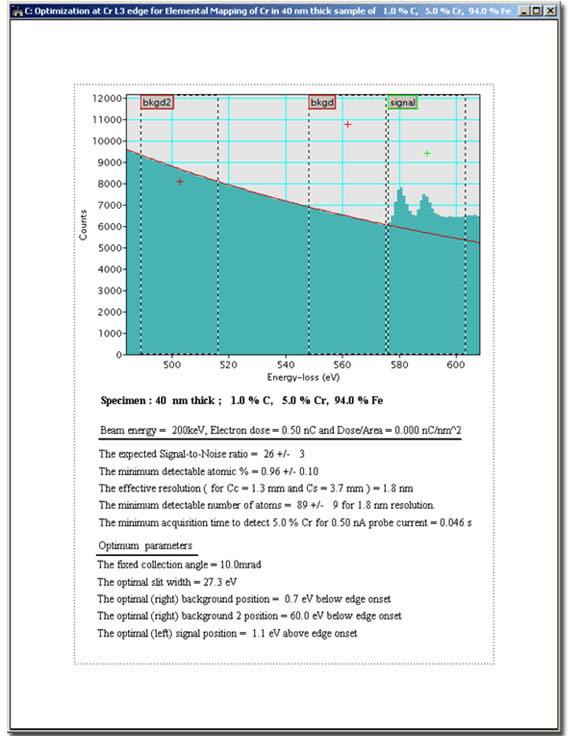EELS Advisor
EELS and EFTEM compositional mapping simulation
Save wasted time on fruitless EELS (Electron Energy Loss Spectroscopy) experiments with EELS Advisor simulation software. It can help you answer questions such as:
- Will (EELS) help me measure the carbon content of my steel sample?
- Can I map the platinum in my nanoscale catalyst particles with my TEM energy filter?
- Do I need a field-emission TEM to detect an interfacial boron layer in my device structure using EELS?
The software is based on advanced theoretical modeling of EELS spectra. It encapsulates the complexity of the technique, with a clear and approachable interface to help you find the answers to common questions about your experiments.
EELS Advisor is a plug-in for Gatan Microscopy Suite software.
Further information and quotes:
+44 (0)1223 422 269 or info@blue-scientific.com
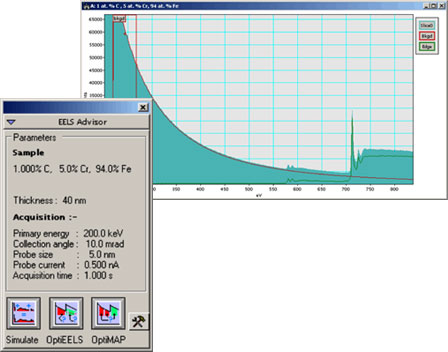
Functions
There are three main functions, detailed in the tabs below: Simulate, OptiEELS and OptiMAP:
Simulate
In simulate mode, you can synthesise EELS spectra.
- Enter basic information into the Specimen and Experiment panels (shown below).
- Click the Simulate button to calculate a spectrum in just one or two seconds.
- You can then explore and analyse the spectra just as you normally would.
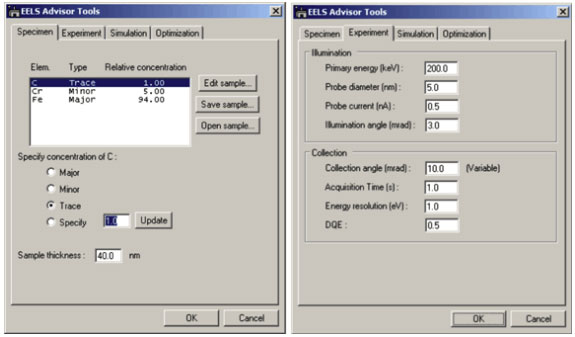
Specimen and Experiment panels
In the example below, the carbon K edge is virtually impossible to detect. From the simulation you can quickly see that it probably wouldn’t be worthwhile making a TEM specimen of this material for EELS measurement of the carbon content.
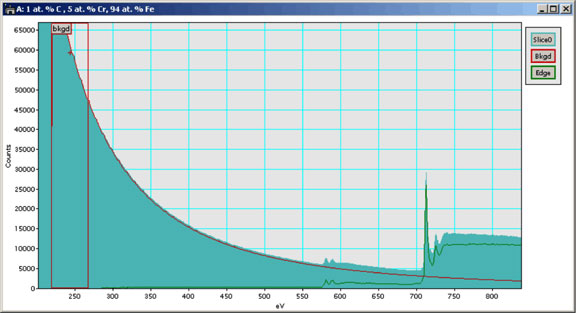
Simulated EELS spectra
OptiEELS
With OptiEELS you can establish the optimum experimental parameters for your EELS acquisition.
After performing a simulation, you may still wonder whether the measurement would have been possible with different experimental conditions, to maximise the signal of interest. OptiEELS helps you answer this question.
- Simply tell the software which experimental parameters can be varied.
- After a few seconds of calculation, EELS Advisor will tell you how to optimise the signal of interest and whether the signal-to-noise ratio will be sufficient for drawing firm conclusions.
The results are presented in an annotated GMS image like the one below.
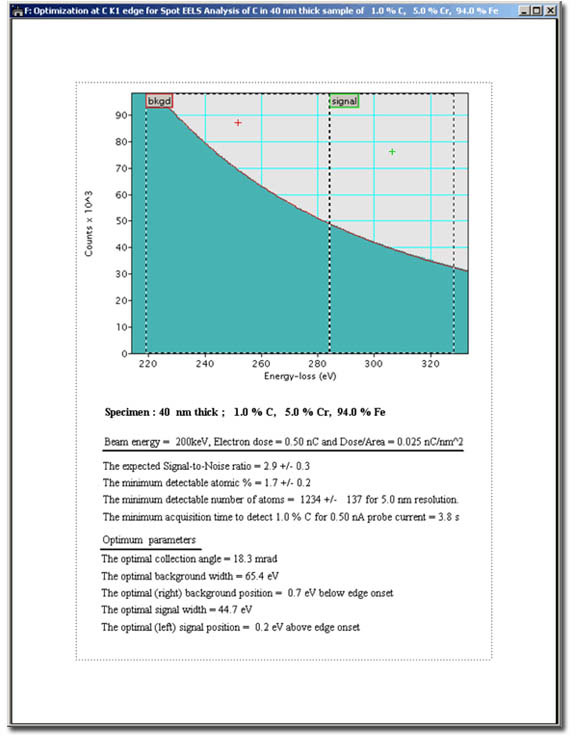
OptiMAP
With OptiMAP you can determine the best conditions for EFTEM elemental mapping.
If you need to map an element in your sample, OptiMAP can tell you whether it’s possible, and the best way to collect energy filtered images for your map.
- Enter your sample and experimental information.
- In a few seconds, OptiMAP calculates the optimum slit width and energy positions for the component images of the map.
- It also estimates the SNR of the signal for an indication of whether the map data would be collecting.
The results are presented in a GMS image like the example below.
